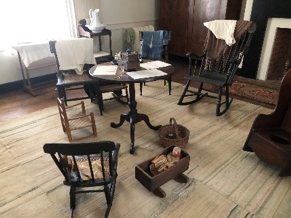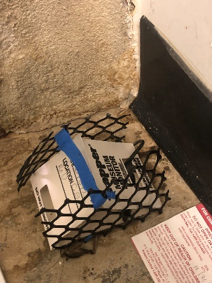Challenges of Curatorial Work at Appomattox
Written by: Natalie Ginez
After having spent several weeks working at Appomattox Courthouse National Historical Park, I have begun to better understand the importance of the work that the Curatorial staff carry out throughout the park. This work is often unknown and unseen by visitors to Appomattox, but it contributes to making the park look as clean, presentable, and organized as it does. First, Curatorial Staff on a regular basis each month goes into each of the buildings in the village and cleans them thoroughly. Areas such as the baseboards, walls, tops of fireplace mantles are dusted off carefully to remove any dirt and debris from the area. Cobwebs are also removed through this process of dusting. Each building is vacuumed using a shop vacuum to catch any dirt removed from dusting and to clean any other debris that cannot be gotten through dusting. This is done with great care in order to not damage objects or the material in the historic building that is being cleaned. While this may seem like basic housekeeping tasks, it can be a challenge as some areas get dirtier than others. In addition, some buildings have more areas to clean than others. For example, many visitors come into the McLean House everyday with shoes that might be covered in dirt particles coming from the outside. Therefore, we have to clean it very often so that it looks presentable to visitors who want to see the famous Surrender Parlor. The McLean House also has several areas that need to be cleaned including the Surrender Parlor, Master Bedroom, Warming Kitchen, East and West Bedrooms, and even the Slave Quarters that are behind the house itself. Given the large number of areas, it is often difficult to keep up with, but the curatorial staff does their best.

A view into one of the upper bedrooms of the McLean House
Another challenge that visitors don’t often notice is that Curatorial staff must keep the collection organized, intact, and accounted for while allowing it to be accessible to visitors. Keeping the collection organized is a challenge as many artifacts have not been cataloged and this makes them difficult to track down. The annual inventory that Appomattox does helps to keep the collection organized and accounted for as staff must go search for those items to make sure they are not only present in the collection, but to make sure they are in the location the collections database ICMS says they are. If the location they are found in does not match the location indicated in ICMS, then this information must be updated. Keeping track of these artifacts is important as at some point they might be put on exhibit or be used for research by a contractor so organization is key. However, keeping the collection intact is another challenge. Everyday pests try to invade the collection and cause damage to collection items the park holds. For example, silverfish and book lice are potent pests as they may cause great damage to items made of paper such as letters, books, and other valuable materials in the APCO collection. To combat this, Curatorial staff put out sticky traps in various buildings in the village in order to catch these pests and stop any damage. Yet, even though these traps are meant to catch museum pests, every once in a while, a lizard may get caught in the traps unintentionally.

A lizard caught in one of the sticky traps in Curatorial Storage
The more that I do these tasks, the better I understand why curatorial care is necessary. In the future, I would like to work as a collections manager and care for museum collections, preserving them so that others can get to see these wonderful artifacts like I do.
Interested in conservation efforts and want to learn about American Conservation Experience? If so, click here to view our programs, including our Conservation Crew and Emerging Professionals in Conservation (EPIC) programs. Click here to view conservation project locations across the United States.